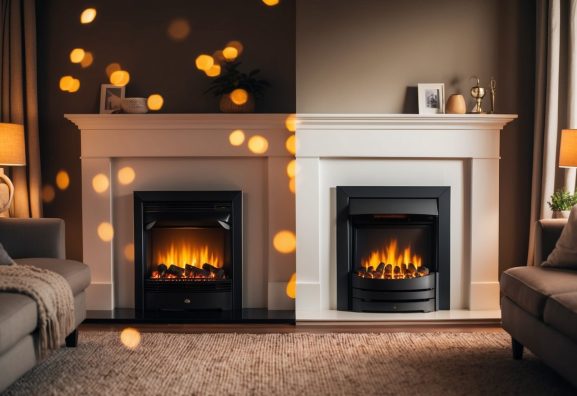Which Gas Fireplace Produces the Most Heat: A Comprehensive Guide
Gas fireplaces have become an increasingly popular choice for homeowners seeking convenience and efficiency in home heating. Among various models available, ventless gas fireplaces generally provide the highest heat efficiency, often retaining up to 90% of the heat generated, due to their design that minimizes heat loss. Direct vent models are another efficient option, typically producing between 70% and 85% efficiency by directing combustion exhaust outside while allowing radiant heat to circulate within the home.
For those seeking the warmest output, models producing up to 60,000 BTUs are worth considering, especially when heating larger spaces. It’s essential to factor in the size of the space being heated when choosing a fireplace, as different models offer various BTU ranges spanning from 10,000 to 60,000. Optimizing your fireplace’s efficiency can significantly impact its ability to warm your living area effectively, making careful consideration of the model’s specifications crucial.
Homeowners not only benefit from the heat efficiency but also from the easy installation of many modern gas fireplaces. Factors such as installation type and ventilation requirements are important to understand when planning your purchase. These considerations can enhance overall heating efficiency and ensure the selected fireplace meets your heating needs appropriately.
Key Takeaways
- Ventless models often provide the highest heat efficiency.
- Choose models with higher BTUs for larger spaces.
- Understand installation and ventilation for optimal performance.
Types of Gas Fireplaces
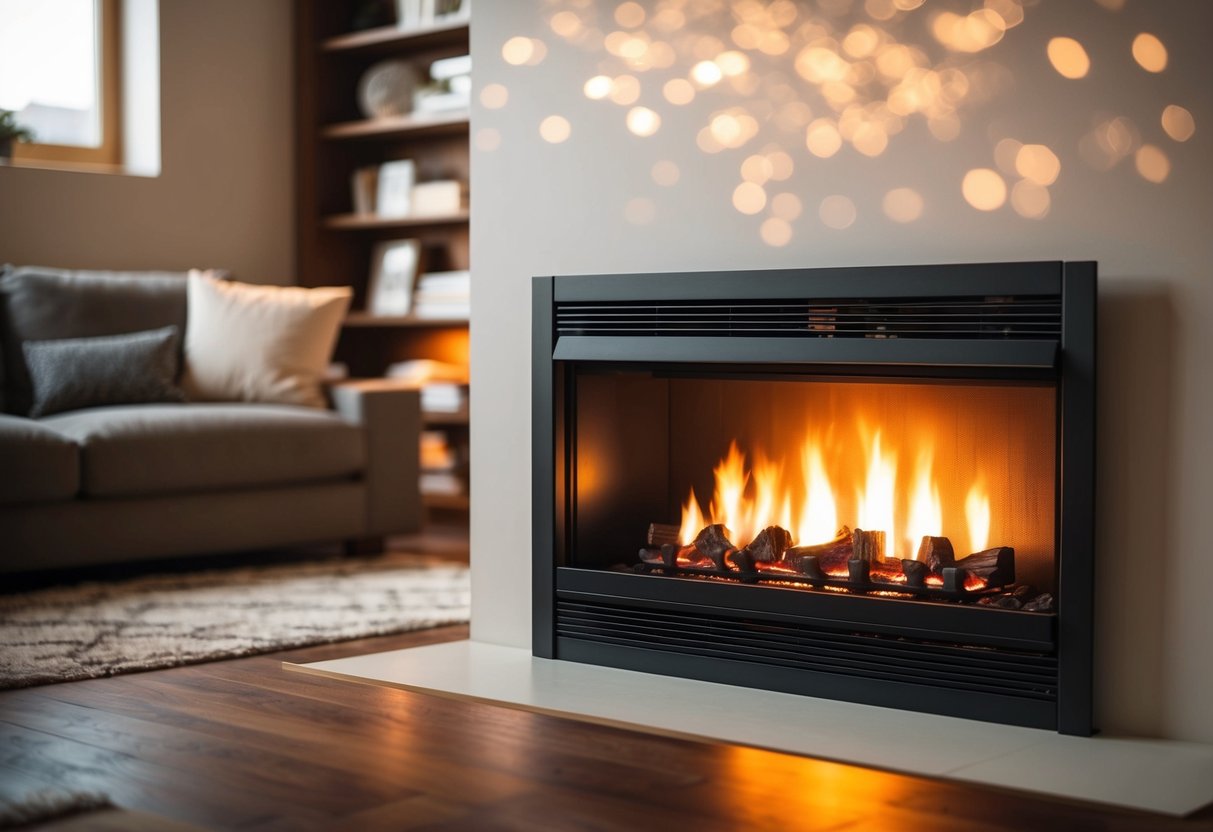
Gas fireplaces can vary greatly in terms of efficiency and operation. Each type offers distinct advantages, whether that’s maintaining heat within a room or providing a traditional fireplace ambiance.
Direct Vent Gas Fireplaces
Direct Vent Gas Fireplaces are highly efficient as they draw air from outside for combustion and expel gases outside. This system maintains indoor air quality and operates efficiently in sealed environments. They typically offer flexibility for installation, even in rooms without existing chimneys.
These fireplaces often have a glass front to maintain safety and maximize heat output. Additionally, see-through models are available, allowing visibility between two living spaces, adding both function and style to home interiors.
Ventless Gas Fireplaces
Ventless Gas Fireplaces, often referred to as Vent-Free models, are designed to provide maximum heat efficiency. They do not require vents or chimneys, allowing for easy installation and ensuring that almost all the heat remains in the room. With efficiency ratings often between 80% and 90%, these fireplaces operate cleanly and are equipped with oxygen depletion sensors for safety.
They are ideal for areas without venting options but require careful placement to adhere to safety guidelines.
B-Vent Gas Fireplaces
B-Vent Gas Fireplaces, also known as natural vent or B-vent fireplaces, mimic traditional wood-burning fireplaces by venting through a chimney. They draw air from indoors and require a vertical venting system. While they provide a more classic aesthetic, including options like outdoor installations for patios, they tend to be less efficient than other types due to the heat loss through venting.
Their charm lies in the natural flame look and feel, catering to those who prioritize ambiance over sheer heat output.
Heat Output Measurements
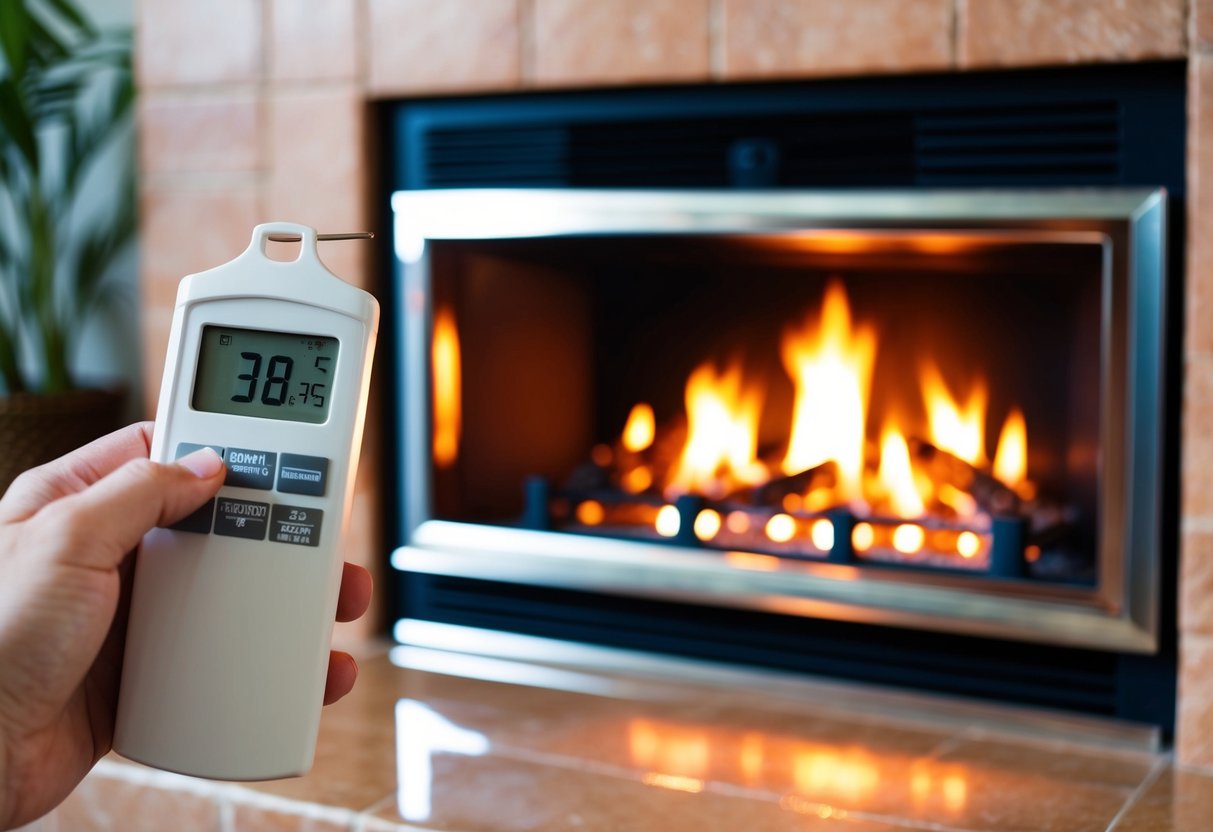
Gas fireplaces are commonly evaluated by their BTU ratings and efficiency levels. Both factors significantly influence how much actual heat a fireplace can deliver to a room. Higher BTU ratings generally indicate greater potential heat output, whereas efficiency measures how effectively this heat warms the room.
Understanding BTU Ratings
The British Thermal Unit (BTU) is a standard metric for measuring heat output, particularly in gas fireplaces. It indicates the amount of heat required to raise the temperature of one pound of water by one degree Fahrenheit. High BTU ratings in gas fireplaces correlate with greater potential heat output.
Vented fireplaces might have ratings between 30,000 to 50,000 BTUs. While these offer significant heat production capacity, inefficiencies can result from heat loss through the flue. Conversely, ventless options, though generally lower in BTUs, maximize heat retention by keeping more warmth inside the room.
Comparing Fireplace Efficiency
Fireplace efficiency measures how well a gas fireplace converts fuel into usable heat. Ventless gas fireplaces often boast higher efficiency ratings, between 80% and 90%, due to minimal heat loss. This means they can deliver almost all of their energy output directly into a room. In contrast, direct vent fireplaces offer efficiency rates ranging from 70% to 85%.
Efficiency hinges on factors like design and technology used, influencing both operational costs and heating effectiveness. Efficiency ratings usually complement BTU indicators to assess overall heat delivery potential.
Installation and Ventilation
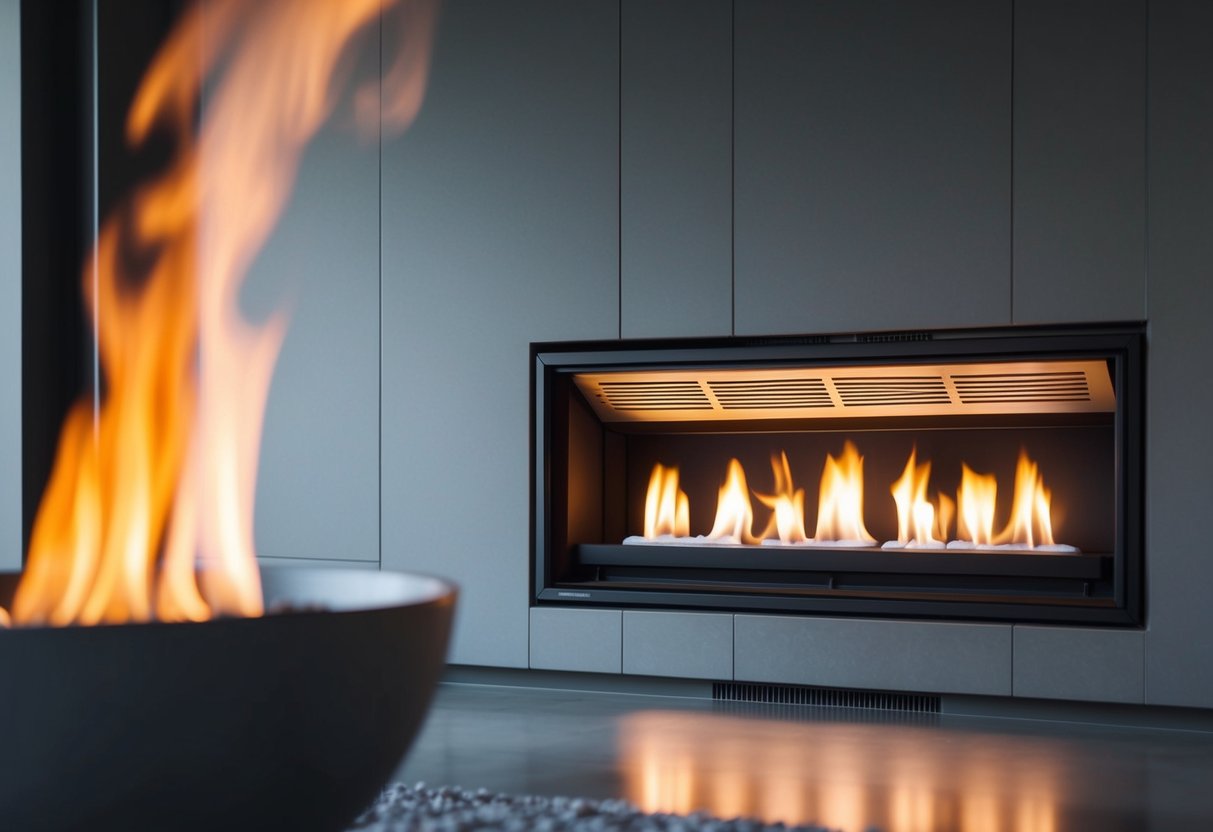
Proper installation and ventilation are critical for the safe and efficient operation of gas fireplaces. Understanding the differences between direct vent, natural vent, and ventless systems will help determine the best option for maintaining indoor air quality and maximizing heat output.
Direct Vent Systems
Direct vent systems use two-way vents to expel exhaust outside while drawing fresh air into the fireplace for combustion. This system is ideal for maintaining indoor air quality since it does not rely on indoor air.
Advantages include increased safety and efficiency as they use sealed combustion chambers. Additionally, direct vent fireplaces can be installed in various locations, such as against interior walls, because they do not require an existing chimney.
Challenges may arise in terms of additional installation costs but the benefits often justify these expenses.
Natural Vent Options
Natural vent systems utilize existing chimneys, making them suitable for fireplaces being retrofitted into older homes. They rely on the natural buoyancy of hot air to vent combustion gases outside.
The installations are typically less expensive than direct vent systems since they use existing structural features. However, they are slightly less efficient because they draw room air into the fireplace for combustion.
Ensuring the chimney is properly maintained and insulated is crucial for optimal performance and safety. Periodic inspections and cleaning are necessary to prevent issues.
Ventless System Considerations
Ventless systems are designed to burn gas cleanly enough that they do not require a flue to exhaust combustion byproducts outside. This option makes them easier and less expensive to install. They allow greater flexibility in placement within the home.
While they offer convenience, concerns regarding indoor air quality and moisture buildup may arise since they vent exhaust into the living space. It is essential to ensure the room has adequate ventilation and an oxygen-depletion sensor is recommended for safety.
Local codes and regulations might restrict the installation of ventless fireplaces, so it’s important to check compliance before proceeding with installation.
Enhancing Heating Efficiency
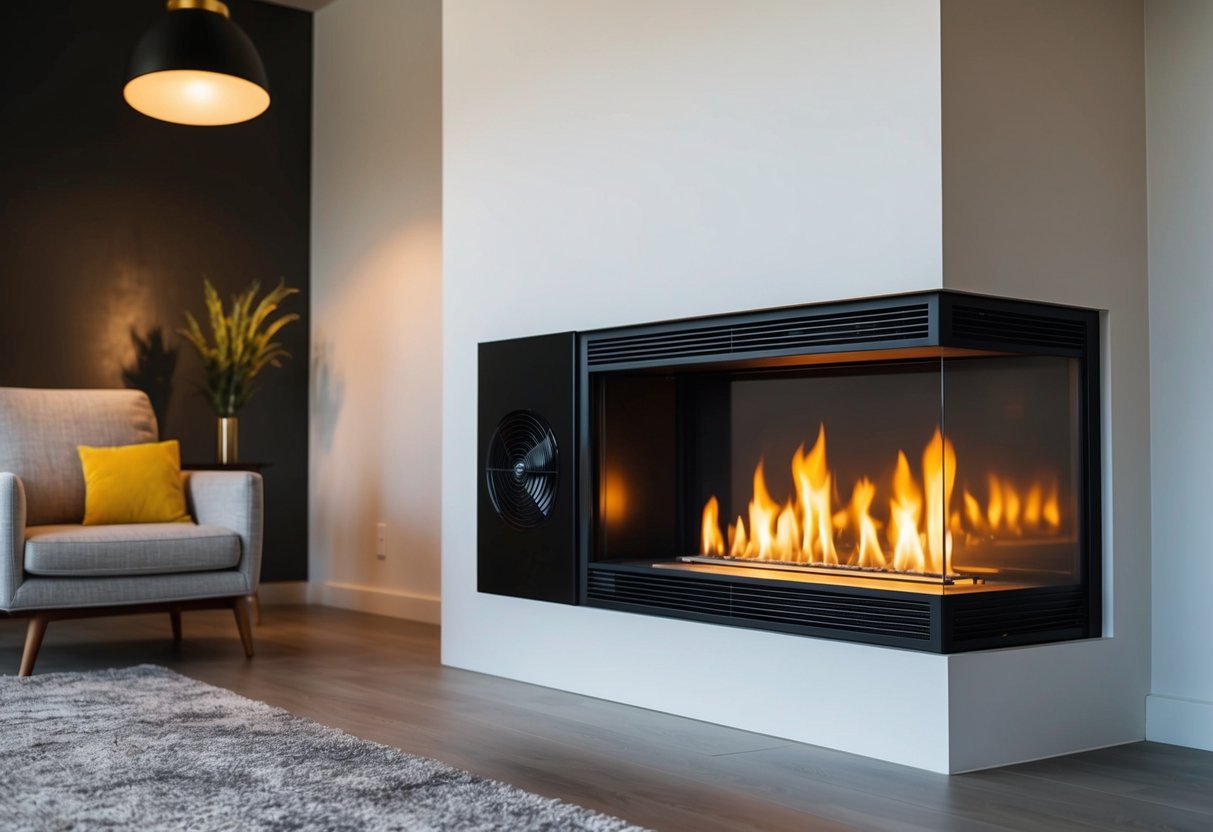
Maximizing the heating efficiency of a gas fireplace involves strategic use of zone heating and the incorporation of heat exchangers. These methods reduce heat loss and improve air circulation, making the fireplace a more effective primary heat source.
Zone Heating Strategies
Zone heating allows homeowners to heat only the occupied areas of a home, reducing unnecessary energy use. Gas fireplaces, particularly direct-vent models, are well-suited for this approach due to their flexibility in placement and high-efficiency ratings of 70% or more.
Placing fireplaces in high-traffic areas provides substantial warmth where it’s needed most. The heat remains concentrated, minimizing heat loss and optimizing the fireplace’s output. Using thermostats and programmable timers can further enhance control over the heating zones, adjusting the heat output according to the schedule and specific needs.
Incorporating Heat Exchangers
Heat exchangers are a practical method to improve the efficiency of gas fireplaces. They capture and redistribute heat that would otherwise be lost, ensuring a higher percentage remains indoors.
These devices work by channeling the warm air into the room, bolstering the fireplace’s role as a primary heat source. Installing a heat exchanger is beneficial for enhancing air circulation, as it pushes the warm air further from the heat source. This setup makes the space feel comfortably warm, increasing overall heating performance without extra energy costs.
Maintaining Your Gas Fireplace
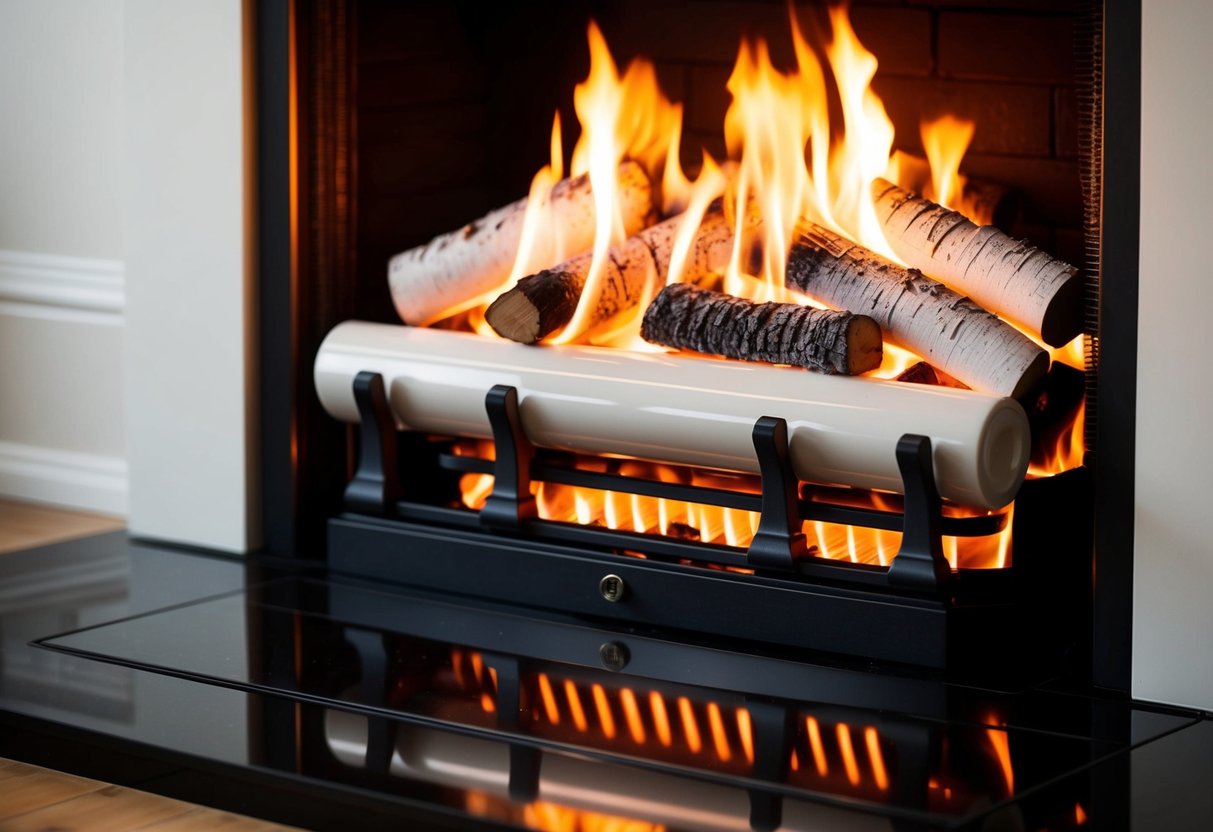
Proper maintenance of a gas fireplace ensures efficient operation and prolongs its lifespan. This includes regular routine checks for cleanliness and wear, along with essential safety inspections.
Routine Checks and Maintenance
Routine maintenance of a gas fireplace revolves around cleanliness and functionality. Dusting the mantel and surrounding areas with a soft, dry cloth removes accumulated dirt. In cases of stubborn dust or dirt, a slightly damp cloth can be used, but avoid water-based cleaners.
Inspect the glass doors for any cracks and clean them using a manufacturer-recommended cleaner. Regularly check the gasket seal for damage to ensure it maintains an airtight fit.
Burner and ignition system inspections are crucial to confirm they are functioning correctly. Removing soot and debris from these parts helps in sustaining a clear path for the gas to travel and enhances overall performance.
Vent and flue inspections are necessary to ensure unobstructed pathways for exhaust gases, preventing carbon monoxide build-up. These tasks, often overlooked, are vital for safety and efficiency.
Safety Inspections and Precautions
Safety inspections begin with testing the carbon monoxide detector to ensure it is operational. Faulty detectors need immediate replacement.
Annual inspections by professionals are essential. They assess the overall condition of the fireplace, ensuring all components are in top-notch condition.
Chimney cleanliness checks, especially for vented models, prevent creosote build-up, which can be a fire hazard. Although gas fireplaces produce minimal residue, any accumulation can obstruct vents and flues.
Securely install safety screens to prevent accidental burns. These screens should be checked regularly for any signs of wear or damage. They play a critical role in protecting both equipment and household members.
Frequently Asked Questions

When considering a gas fireplace, factors such as design and installation play a critical role in determining heat output. Here are some key considerations for evaluating efficiency and maximizing performance.
What factors determine the heating efficiency of a gas fireplace?
Heating efficiency in gas fireplaces is influenced by the type of burner, design features like chevrons, and insulation quality of the room. A fireplace with advanced combustion technology tends to offer better efficiency by burning fuel more completely.
How do ventless gas fireplaces compare in heat output to vented models?
Ventless gas fireplaces typically produce more heat compared to vented models because they exhaust their heat directly into the room without the need for external ventilation. This efficiency, however, must be balanced with adequate room ventilation to manage combustion byproducts.
What is the BTU range for high-efficiency gas fireplace inserts?
High-efficiency gas fireplace inserts generally have a BTU range between 20,000 to 50,000. This range allows these inserts to provide ample heat for medium to larger spaces, depending on insulation and other factors influencing room temperature retention.
What are the advantages of a direct vent gas fireplace in terms of heat production?
Direct vent gas fireplaces offer an advantage in heat production by eliminating the need for a traditional chimney. They pull combustion air from outside and vent directly outdoors, maintaining indoor air quality while efficiently distributing heat.
Can the design of a gas fireplace impact its heat output?
Yes, the design significantly impacts heat output. A fireplace with an efficient burner design, such as chevrons, can enhance heat distribution. Features like a heat exchanger or fireback can further improve the ability to warm a space by reflecting and radiating heat more effectively.
How can I maximize the heat distribution from my gas fireplace?
Maximizing heat distribution can be achieved by using accessories like a fireplace blower or installing a heat exchanger. These devices circulate warm air throughout the room. Positioning furniture and curtains to allow airflow also helps in effectively utilizing and spreading the heat produced by the fireplace.


